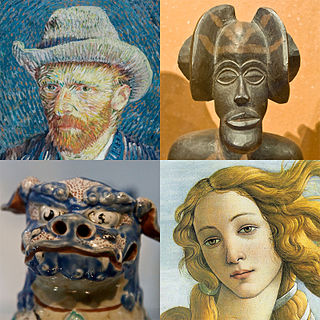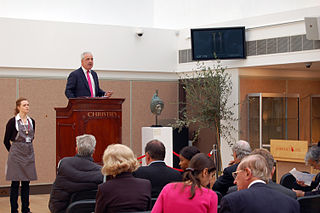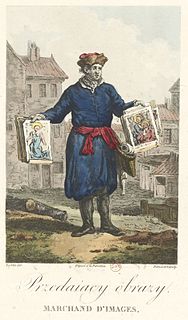It is proposed that this article be deleted because of the following concern:
If you can address this concern by improving, copyediting, sourcing, renaming, or merging the page, please edit this page and do so. You may remove this message if you improve the article or otherwise object to deletion for any reason. Although not required, you are encouraged to explain why you object to the deletion, either in your edit summary or on the talk page. If this template is removed, do not replace it . The article may be deleted if this message remains in place for seven days, i.e., after 16:34, 13 October 2019 (UTC). Nominator: Please consider notifying the author/project: {{subst:proposed deletion notify |Art world economics|concern=This isn't exactly a separate thing from "art market" and there's not real reason to give it its own page. The page itself isn't encyclopedic, includes no references, and advances a specific unsubstantiated theory ("works only assured value as long as there is a restricted work on the open market"). No reason for this page to exist!}} ~~~~ |
This article needs additional citations for verification .(October 2008) (Learn how and when to remove this template message) |
Art world economics is a relatively unexplored area of financial exchange that exists at the edges of the regular financial industry. Investment in art has been an accepted form of deposit investment for several decades such as the purchase of works by Matisse, Van Gogh and Picasso. However these works only have an assured value as long as there is a restricted supply of works on the open market, i.e., the artist is dead or producing small numbers of works and that the authenticity of works can be verified by a small number of sources. In the case of contemporary artists it is the interest of collectors and therefore dealers to ensure a tightly controlled line of supply.

Art is a diverse range of human activities in creating visual, auditory or performing artifacts (artworks), expressing the author's imaginative, conceptual ideas, or technical skill, intended to be appreciated for their beauty or emotional power. Other activities related to the production of works of art include the criticism of art, the study of the history of art, and the aesthetic dissemination of art.

Authenticity in art is the different ways in which a work of art or an artistic performance may be considered authentic. Denis Dutton distinguishes between nominal authenticity and expressive authenticity. The first refers to the correct identification of the author of a work of art, to how closely a performance of a play or piece of music conforms to the author's intention, or to how closely a work of art conforms to an artistic tradition. The second sense refers to how much the work possesses original or inherent authority, how much sincerity, genuineness of expression, and moral passion the artist or performer puts into the work.
The intricacies of art world economics were exposed by the lawsuit of the family of Mark Rothko against the Marlborough Fine Art Gallery brought during the 1970s. In an action known as the Rothko Case, it was determined that Marlborough had knowingly manipulated their management of Rothko's works to maintain a higher sale price after his death, to the detriment of Rothko's family's interest in his estate.

The art world comprises everyone involved in producing, commissioning, presenting, preserving, promoting, chronicling, criticizing, and selling fine art.

Mark Rothko, born Markus Yakovlevich Rothkowitz, was an American painter of Jewish Litvak descent. Although Rothko himself refused to adhere to any art movement, he is generally identified as an abstract expressionist.
The art market was hit by the 2008 financial crash; sales were down about 41% by 2009, compared with a market peak of almost US$66 billion in 2007. Contemporary art was particularly badly hit, with sales in that category plunging almost 60% over the two years 2008-2009. However, by 2011 the value of sales had almost reached the record level of 2007, and they have remained between $56bn and $68bn in the years since. [1]










